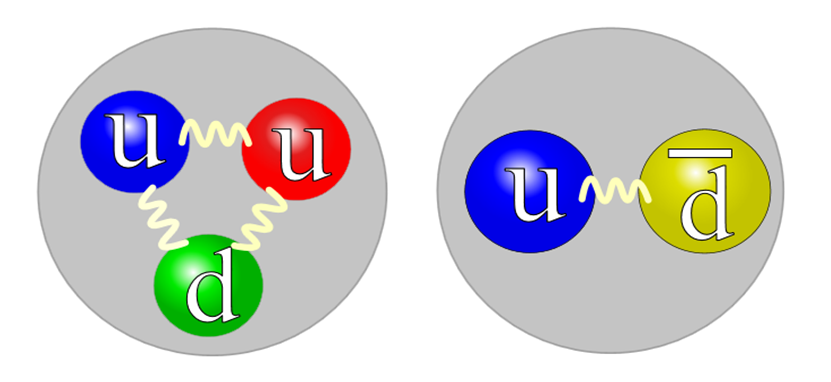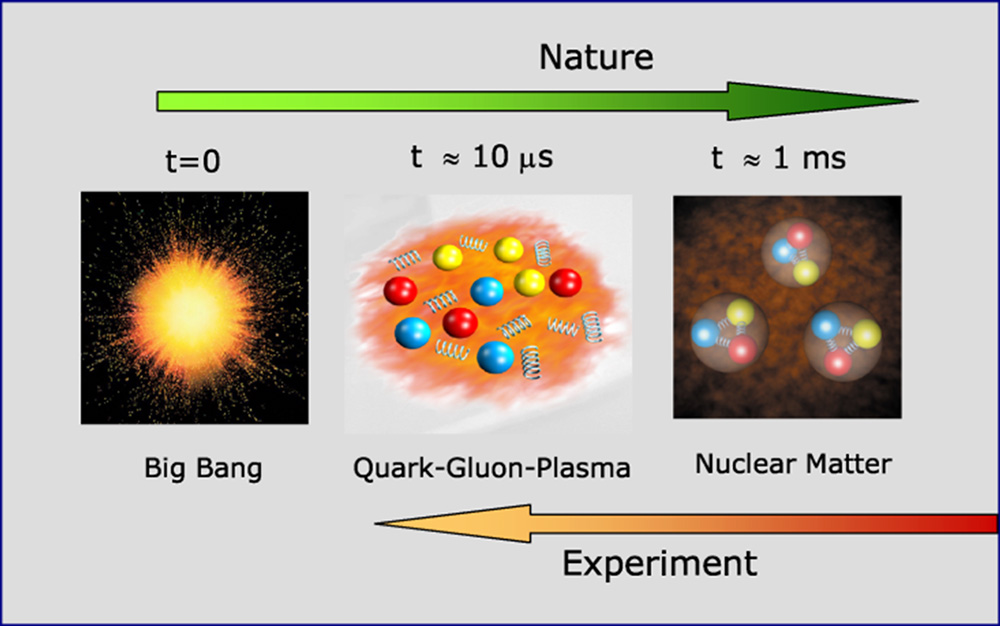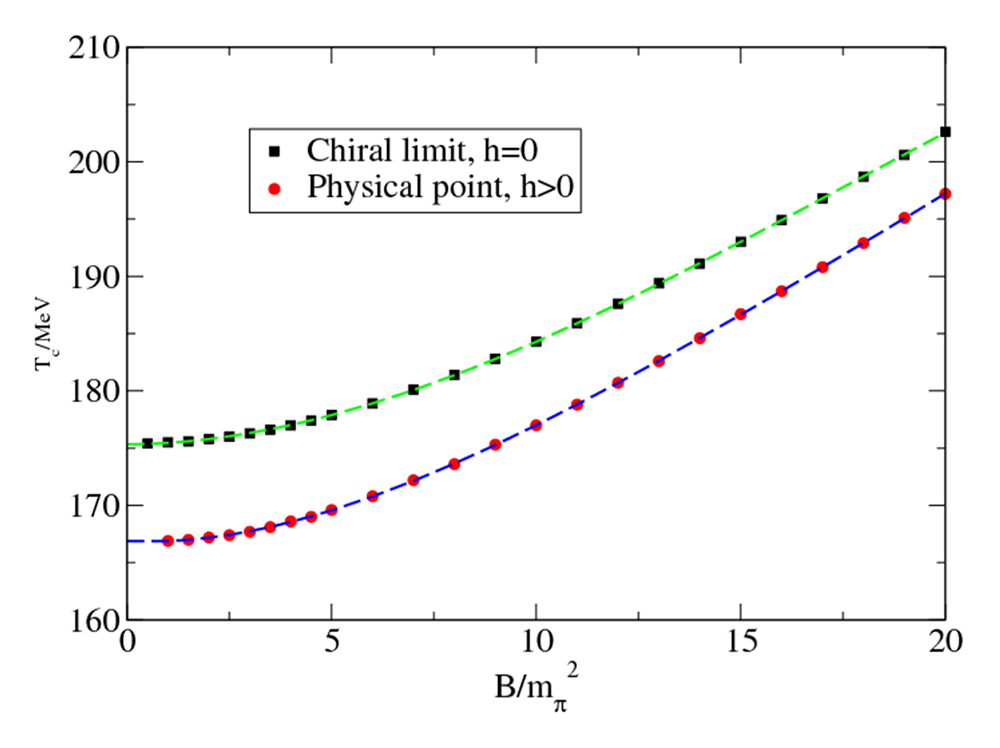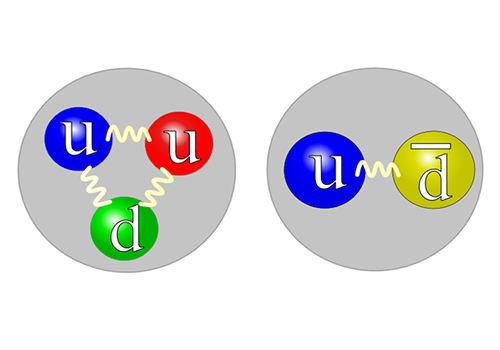When the universe was created, strong magnetic fields existed. The same type of magnetic fields can be created in experiments when heavy ions are made to collide. We study how elementary particles behave in these fields. The theoretical understanding of this is important in order to explain the experiments as well the history of the universe.
Elementary particles, such as protons, neutrons, and pions are composed of different types of quarks and anti-quarks. For example, a proton is composed of two u-quarks and one d-quark, while a pion is built out of a u-quark and an anti d-quark.(see Figure 1). Elementary particles that consist of quarks and/or antiquarks are called hadrons.

Extreme temperatures
When a hadron gas is heated to extreme temperatures, the hadrons “melt”. This means that the quarks and antiquarks are no longer bound together, but can move freely around. This is called
a phase transition from the hadronic phase to a so-called quark-gluon plasma phase.
The temperature required for this phase transition is approximately 4 trillion degrees Celsius, which is many orders of magnitude higher than the temperature in the core of the Sun, which
approximately 15 million degrees Celsius.
Temperature drop after the Big Bang
The opposite of the melting process mentioned above, took place shortly after the Big Bang.
Immediately after the Big Bang, the temperature was so high that a quark-gluon
plasma existed. As the universe expanded, the temperature dropped rapidly, and approximately 10 microseconds after the Big Bang it was so “cold” that hadrons were formed.
This is schematically illustrated in Figure 2.
Heavy-ion collision experiments at CERN
A quark-gluon plasma can be created in the lab by colliding two heavy ions, for example
gold or lead ions. This kind of experiments are carried out at the Large Hadron Collider at CERN, Geneva. The energy of the particles in these experiments is so high that the associated temperature created in the collision is sufficient for the hadrons to melt (see Figure 2).

It is known that very strong magnetic field existed in the early universe. Strong magnetic fields are also created in some of the heavy-ion collision experiments. The theoretical understanding of how hadrons behave in these fields, is therefore important in order to explain the experiment as well the history of the universe.
Elementary particles in strong magnetic fields
In a recently published paper, we have discussed in detail the properties of elementary particles in strong magnetic fields at temperatures in the vicinity of the phase transition. The material that we have covered includes the contributions from a large number of authors. It also includes the PhD work of William Naylor in collaboration with Anders Tranberg (UiS) and Jens O. Andersen.
This new knowledge is a step of the way towards understanding what happened in the early universe.

Figure 3 shows how the melting temperature of a pion gas varies with the temperature. In this model calculation, the melting temperature increases as the magnetic fields grows. The green curve corresponds to massless pions while the blue curve corresponds to pions with the mass found in nature.
